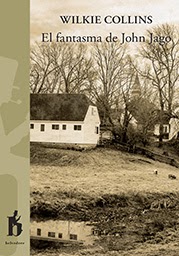About the book
The Ironing Room, by Inma Chacón, an intimate, sincere and profound family novel
● The Iron Room tells the life of a large family that has to leave their town after the death of the father of the family and have to settle in Madrid.
● The author of The Silences of Hugo intersperses in this novel family anecdotes about her mother and her own experiences in which her twin sister, Dulce, plays a major role.
● This family novel is the most sincere and intimate text written by Inma Chacón. Written with great sensitivity, the text is exciting from the first page.
Sitting in the heat of a brazier on both sides of a stretcher table, we can imagine Inma Chacón reading fragments of her latest novel The Iron Room to her mother. In the words of the author herself, this work can be described as “a conversation between memories. A dialogue between the anecdotes my mother told me and my own, embedded in a very personal text, very mine, the most intimate I have written, where the main characters are the members of my family.” In The Iron Room, which goes on sale next March 2, published by Contraluz, the Extremaduran author pays a heartfelt tribute to her mother in particular and to all her mothers in general. To families in general and to her twin sister, Dulce, in particular. “I started this novel in 2019, before the pandemic, when my mother was still alive. Shortly after confinement ended, my mother died, and I continued with the novel to try to retain everything I learned from her,” says Chacón.
The Iron Room tells the life of a large family that has to leave their town because the father of the family dies and settles in the capital of the country, where they feel uprooted and nostalgic for what they have left behind, a happy life. , with many comforts and with economic solvency and a social status that they will lose with the death of the head of the family. But, above all, a life full of love, friends and security. Through memories, the story of the maternal ancestors is also told, who went to the Philippines in the mid-19th century to return shortly before the colony’s independence, like many other Spaniards.
structured like a narrative, with an intimate tone, written from the heart, from feelings and emotions, and also from personal memory and, therefore, “open to fables,” the author clarifies.
“I started the novel so that I wouldn’t forget the things my mother told us about her family and about herself when she was young and, little by little, my mother’s memories suggested memories of my own life,” explains Inma. Chacón on how the idea for the novel was born. Part of these memories revolve around her sister, also a writer. Her condition as twins decisively marked the relationship between them and the way in which they both related to the world. “I needed to express how I have had to rebuild myself after losing her and what my own personal process has been like. What it means to be a twin, what it entails, how duality is experienced, how others see you, what the world of twins is like, how we live it and how I lived it later, having to be one. In the novel she reflected a lot on all these circumstances.”
The novel, fundamentally, can be the story of any happy family, with its hard and even tragic moments. “I am sure that the reader will feel great emotion when opening its pages. I think he will feel that, in some way, his own life is being talked about. Some will find many memories that they will share with me, and others, I suppose, will learn about a part of daily life in the 60s and 70s that they did not know about,” explains Inma Chacón.
Source: https://algunoslibrosbuenos.com/el-cuarto-de-la-plancha


